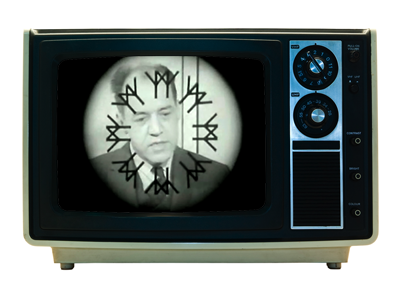Julien Hébert and the Expo 67 Symbol
Julien Hébert was born in 1917 in the municipality of Rigaud. A pioneer of modern industrial design in Québec, Hébert was originally a student of philosophy before venturing into the Arts. He studied sculpture in Montreal at l'École des beaux-arts, and in Paris under famed sculptor Ossip Zadkine.
Hébert's prominent career saw him teach art history and sculpture at the École des beaux-arts and planning and design at the École du meuble. He also played a key role in establishing the École du design industriel at the Université de Montréal, where he taught as well.
In 1979, he was awarded the distinguished Prix Paul-Émile-Borduas.
Julien Hébert's most famous contribution to popular culture is arguably the design of the Expo 67 logo. In the above Radio-Canada archive, Hébert himself sheds light on the Expo planners' selection process, as well as the meaning of the now-ubiquitous symbol.
Hébert's prominent career saw him teach art history and sculpture at the École des beaux-arts and planning and design at the École du meuble. He also played a key role in establishing the École du design industriel at the Université de Montréal, where he taught as well.
In 1979, he was awarded the distinguished Prix Paul-Émile-Borduas.
Julien Hébert's most famous contribution to popular culture is arguably the design of the Expo 67 logo. In the above Radio-Canada archive, Hébert himself sheds light on the Expo planners' selection process, as well as the meaning of the now-ubiquitous symbol.
 image montage by author
image montage by authorLabels: expo life, groovy graphic art

4 Comments:
Always awesome.
thank you.
I follow this site religiously.
-John
Nice Blog, this is an interesting site
Yet another great post. Thanks, Jason.
I just stumbled onto this flickr set and thought it might float your retro boat. It did mine...
http://www.flickr.com/photos/grainspace/
Among other works, Julien Hébert also created a metal mural sculpture in the lobby of Salle Wilfrid-Pelletier at Place des Arts, and the decor of Place-Saint-Henri metro station including the "Bonheur d'Occasion" mural in the ticket hall.
Post a Comment